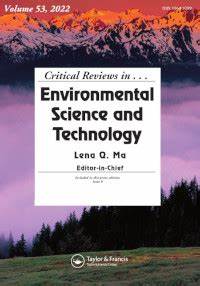有机氯农药在环境中的发生、潜在危害及其周边生物的去除
IF 11.4
1区 环境科学与生态学
Q1 ENVIRONMENTAL SCIENCES
Critical Reviews in Environmental Science and Technology
Pub Date : 2023-04-08
DOI:10.1080/10643389.2023.2196226
引用次数: 5
摘要
摘要有机氯农药以其高效、广谱的杀虫效果在世界各地得到了广泛的应用。然而,由于它们容易生物累积和毒性高,对生态系统和人类健康构成严重威胁。Periphyton普遍存在于淹没的基质表面。它在环境中的碳、营养元素循环和污染物转化中起着至关重要的作用。Periphyton可以通过生物吸附、生物积累和生物降解来去除OCPs,从而改变OCPs在环境中的命运。本文综述了OCPs的发生、全球循环、环境中的潜在危害以及外周生物对其的清除。OCPs残留在水、土壤、大气、沉积物和生物体等不同的环境介质中经常被检测到。它们的危害取决于它们的物理化学性质和暴露途径。综述了外周生物的主要组成和功能。此外,还比较了室内和现场栽培的栽培方法。此外,还讨论了外周菌介导的OCPs去除机制以及影响OCPs去除的主要因素。Periphyton可以自我调节其生物群落以适应OCPs和环境,然后再生新物种以降解OCPs。最后,对外周生物去除OCPs的前景和今后的研究方向进行了展望。这篇综述系统地介绍了OCPs的发生、周期、环境中的潜在危害以及外周生物对其的去除。图形摘要本文章由计算机程序翻译,如有差异,请以英文原文为准。
Occurrence and potential harms of organochlorine pesticides (OCPs) in environment and their removal by periphyton
Abstract Organochlorine pesticides (OCPs) have been widely used around the world due to their high-efficiency and broad-spectrum insecticidal effects. However, they pose a severe threat to ecosystems and human health due to their easy bioaccumulation and high toxicity. Periphyton is ubiquitous in the submerged substrates surface. It plays a crucial role in carbon, nutrients elements cycling and contaminants transformation in environment. Periphyton can remove OCPs through bioadsorption, bioaccumulation and biodegradation, which alters the fate of OCPs in environment. This review presents a comprehensive summary of OCPs occurrence, global cycle, potential harm in environment, and their removal by periphyton. The OCPs residual have been detected frequently in different environmental medias such as water, soil, atmosphere, sediment, and organisms. Their harm is depending on their physicochemical properties and the exposure route. The main compositions and functions of periphyton have been summarized. Moreover, the artificial cultivation methods of periphyton in laboratory and in-situ field are compared. In addition, the mechanisms of periphyton-mediated OCPs removal and the main factors impacting OCPs removal are also discussed. Periphyton could self-regulate its biological communities to adapt to the OCPs and environment, and then regenerate new species to degrade OCPs. Finally, the prospect of OCPs removal by periphyton and future studies are also proposed. This review provides a systematic introduction on current knowledge of OCPs occurrence, cycle, potential harm in environment, and their removal by periphyton. Graphical Abstract
求助全文
通过发布文献求助,成功后即可免费获取论文全文。
去求助
来源期刊
CiteScore
27.30
自引率
1.60%
发文量
64
审稿时长
2 months
期刊介绍:
Two of the most pressing global challenges of our era involve understanding and addressing the multitude of environmental problems we face. In order to tackle them effectively, it is essential to devise logical strategies and methods for their control. Critical Reviews in Environmental Science and Technology serves as a valuable international platform for the comprehensive assessment of current knowledge across a wide range of environmental science topics.
Environmental science is a field that encompasses the intricate and fluid interactions between various scientific disciplines. These include earth and agricultural sciences, chemistry, biology, medicine, and engineering. Furthermore, new disciplines such as environmental toxicology and risk assessment have emerged in response to the increasing complexity of environmental challenges.
The purpose of Critical Reviews in Environmental Science and Technology is to provide a space for critical analysis and evaluation of existing knowledge in environmental science. By doing so, it encourages the advancement of our understanding and the development of effective solutions. This journal plays a crucial role in fostering international cooperation and collaboration in addressing the pressing environmental issues of our time.

 求助内容:
求助内容: 应助结果提醒方式:
应助结果提醒方式:


